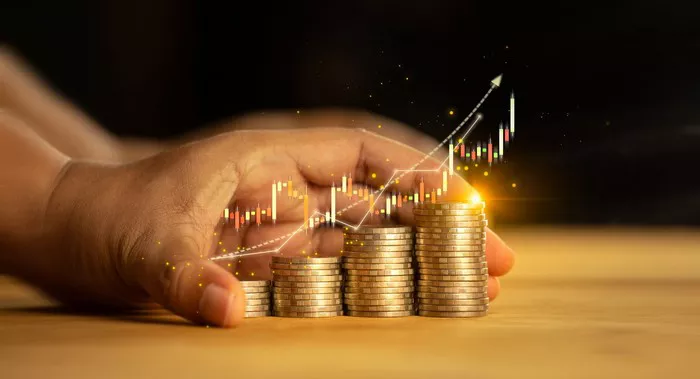Gold surges past $2,200, hitting unprecedented heights in the wake of a dovish Federal Reserve meeting, prompting speculation about its implications for the US dollar. The rally in gold futures comes on the heels of signals from the Fed, with Chair Powell indicating a probable decrease in interest rates, stoking anticipation for increased demand for the precious metal.
Historically, gold has exhibited a negative correlation with interest rates, often rallying when rates decline, as investors seek alternatives to interest-bearing assets. This trend underscores the significance of central bank actions and interest rate projections in influencing gold prices.
Despite the Federal Reserve’s decision to maintain interest rates at 5.5%, expectations outlined in the Fed’s dot plot foresee a reduction to below 3.0% in the near future, with three 25-basis-point cuts anticipated this year. Such forecasts have fueled the surge in gold prices to record highs, underscoring the profound impact of anticipated shifts in monetary policy on investor sentiment and market dynamics, particularly within the realm of precious metals.
While the initial response to the dovish Federal Open Market Committee (FOMC) rate expectations saw weakness in the US dollar, the currency has since rebounded, appreciating against major currency pairs. This recovery emphasizes the intricate interplay between monetary policy, investor outlook, and currency valuations, providing traders with insights into how changes in Fed expectations can reverberate across the forex market.
Although a correlation between the US dollar and gold prices is recognized, it is not absolute. However, historical trends suggest a negative correlation between the two assets, implying that positive movements in one often coincide with negative movements in the other. Nonetheless, recent months have seen this correlation weaken, approaching a value of only -0.25.
For those considering trading the US dollar, opening an account with a forex broker such as IG is a crucial first step. Traders can then select a forex trading platform, monitor currency pairs, and execute trades based on economic events like inflation releases or interest rate decisions. Managing risks is paramount, particularly given the potential for leverage to magnify both profits and losses. Traders are advised to trade with caution, using funds they can afford to lose, and to familiarize themselves with the risks associated with leveraged products before engaging in forex trading.


